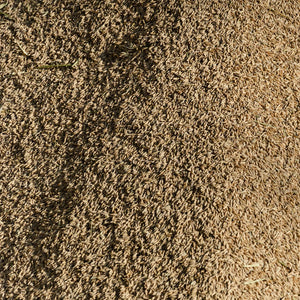With the end of the harvest season, the rice fields are emptied of their precious grain, and the rice begins a new journey in the rice mills. This step, which takes the raw grain from the field to the table, is a combination of tradition, innovation and care. At laBalocchina , each processing phase is studied to guarantee a rice that retains its natural properties, without compromising on quality .
Here are the main stages of processing in the rice mill:
1. Drying: Stabilizing the crop
After harvesting, the rice is dried to reduce the moisture content. This step is essential to stabilize the grains, preventing deterioration and preparing the rice for subsequent processing.
2. Cleaning: the first essential phase
Once dried, the raw rice is cleaned to remove impurities such as straw, pebbles and other debris that may have settled during harvesting. This step, although simple, is crucial to ensuring that only perfect grains continue the process.
3. Removing the husk and chaff: separating the grain from its "shell"
The rice then goes through a specific stage where the two outer layers are removed: the husk and the chaff . The husk is the outermost layer, similar to bran in cereals, while the chaff is a floury material that results from the smoothing of the whole grain to transform it into a white grain. Using stone rollers, these layers are slowly and delicately removed, preventing the grain from overheating and thus preserving its quality. Furthermore, both the husk and the chaff are used in other processes, contributing to the sustainability of the process.
4. Whitening: perfecting the grain without compromise
At laBalocchina, unlike many other producers, we do not apply either intensive bleaching or final polishing, which can give the grains shine but negatively affects cooking. Instead, we leave a small amount of residual chaff, which helps create the so-called “cremina” in the risotto, enhancing the texture and flavor of the dish. This approach allows us to obtain a grain with a natural appearance and an optimal yield in the kitchen.
5. Quality control and packaging
Quality control is a central step in our process. Each batch is carefully inspected to ensure it meets the standards of freshness, aroma and texture. Only when a batch meets all the requirements is it packaged in glass jars and paper bags, ready for your kitchen. Glass, in addition to being an eco-friendly choice, preserves the properties of the rice, maintaining freshness and flavor down to the last grain.
Why is processing important?
Processing affects not only the quality of rice, but also its taste, conservation and nutritional properties. At laBalocchina, thanks to the collaboration with a small family-run rice mill, we follow a traditional and slow processing process, which guarantees exceptional rice in every aspect.
Choosing a carefully processed rice means bringing to the table a product rich in flavor and with perfect cooking resistance, ideal for enhancing Italian cuisine dishes.

